Brightly colored tank pets like the Killifish can be amazing beauties in an aquarium. If attractive substrate is well arranged, then vibrant plants added to complete the set-up, a tank can be nothing less than awesome.
Killifish has won plenty of hearts owing to the well arranged patterns on its lithe body. That is not all; it falls in the category of fish with very few demands. However, first timers need at least two years of experience with the more hardy species before taking a try at this one.
Table of Contents
Killifish Overview
This short information section about Killifish covers basic facts that you must know before housing this fish.
Honestly, Killifish is one of the most beautiful types of fish that you can ever see. It’s colorful, elegant, magisterially graceful, and tiny. This fish species is hardy and mostly found in freshwater.

They belong to the egg-laying family of fish found in the Middle East, Asia, America, Southern Europe, and Africa. Killifish are believed to be the most colorful and beautifully patterned freshwater fish.
If you are willing to keep Killifish in your tank, scroll down to know some interesting facts about them. The below information will help you figure out if Killifish could be the right for your tank:
| Information chart | Killifish |
|---|---|
| Scientific name | Aphyosemion striatum |
| Family | Cyprinodontiformes |
| Care level | Easy-difficult, depending on species |
| Temperament | Peaceful |
| Color | Vividly colored |
| Lifespan | 3 months to 5 years, depending on species |
| Size | 2-9 cm |
| Diet | Carnivore |
| Minimum tank size | 20 gallons per pair |
| Temperature | 68-75 °F/ |
| Water conditions | 6.0–7.0 pH |
| Tank mate compatibility | Danios, smaller Catfish, Rainbows, Tetras |
Appearance of Killifish
Also referred to as Cyprinodontiformes, the Killifish is known for its striking bright colors and well-arranged patterns on the body. Like most fish, the males are more brightly colored than females. This feature becomes more pronounced during breeding.
The head of both sexes is flat at the top. The mouth is found at the tip of their face. The teeth are curved and used to tear flesh into shreds that can be easily consumed. The body has round scales.
The body of the fish is cylindrical but slender. Some are often more cylindrical than others. Some of the fish possess short rounded fins. Others have rather long yet broad fins. They vary in shape and size. This feature could be determined by several factors, including feeding mode, among other reasons.
Most killifish measure approximately 4 inches when mature. There are exceptions too, where a killifish can measure up to 10 inches. Its length has red spots, yellow, green, and even blue. All of them are well defined and can be distinguished within a background of an almost silver appearance.
Varieties of Killifish
This cute little crate has a strange lifestyle, making them so interesting. You can find different varieties in waters all around the world.
Below are some Killifish varieties that are perfect for fish tanks:
Lyretail Killifish
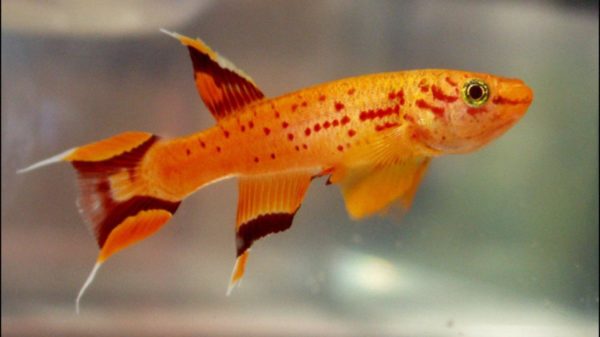
It’s one of the most colorful Killifish species found in the waters of West Africa. They are egg-hangers. They don’t bury their eggs but place them on the plants below the water surface.
Kisaki Killifish
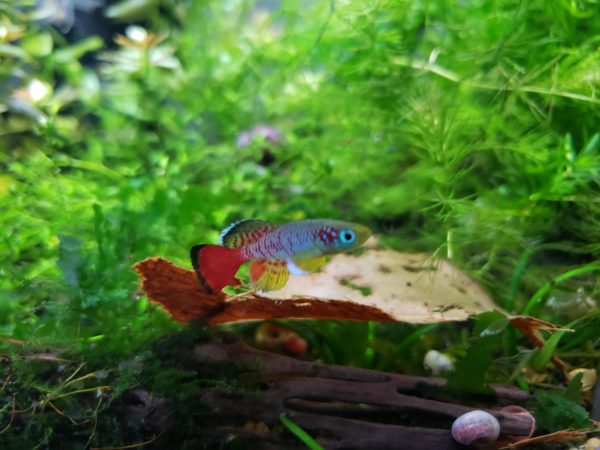
This Killifish species has vividly red colors all over their bodies. They also have blue eyes, which make them look stunning. In captivity, this fish species grow not more than 2.5 inches.
Volcano Killifish
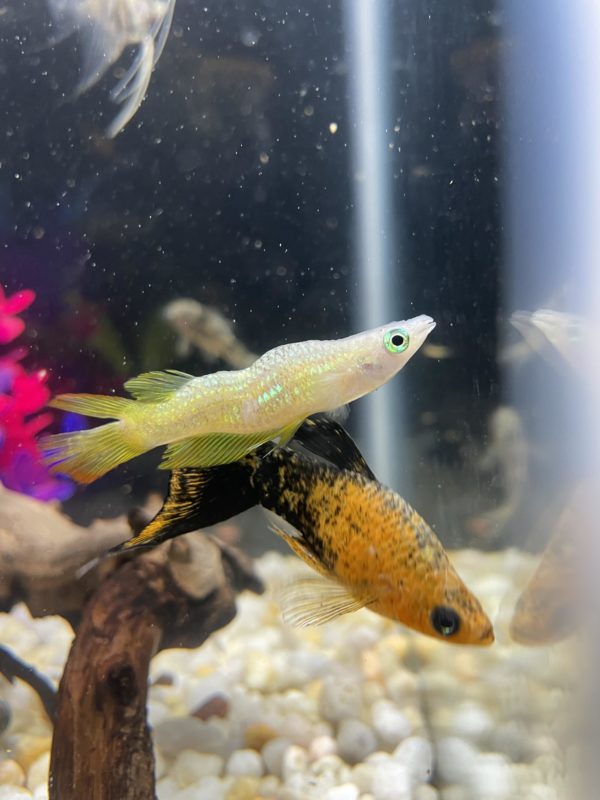
This adorable Killifish species usually inhabit waters located above volcanic soils. They will accept any insect that you feed as they are carnivores. You can keep them in a 10 gallons tank in slightly acidic water.
Redspot Panchax
Another vividly colorful Killifish is Redspot Panchax, inhabiting the Congo River basin. This fish species rarely grows bigger than 2 inches. That means these can be kept in smaller tanks.
Striped Panchax
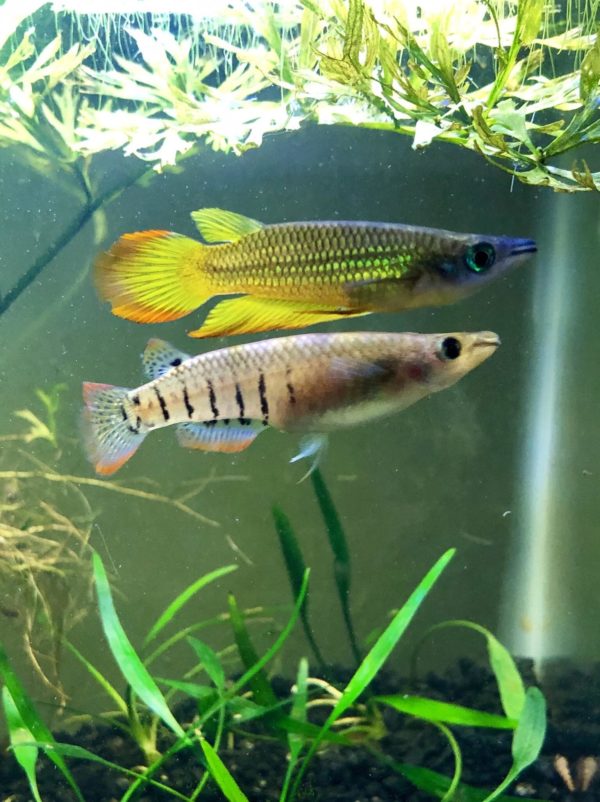
Striped Panchax is probably one of the largest Killifish species known to reach a full size of almost 5 inches during the adult phase. Since this fish species is a carnivore, you must carefully pick the tank mates.
Least Killifish
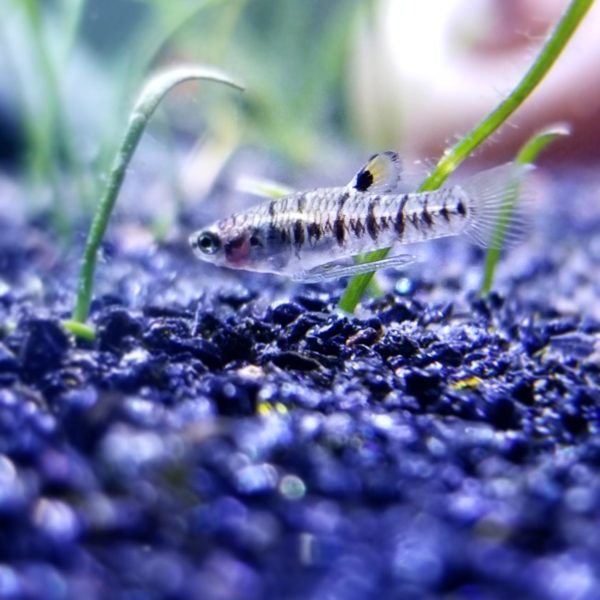
It’s another Killifish species that’s the smallest of all. It only grows up to 1.2 inches. Even though they are tiny, they can quickly adapt to a wide variety of water. If you plan to keep Lease Killifish, you don’t need a tank bigger than 5 gallons.
The lifespan of Killifish
The typical lifespan of Killifish is 2 months to 5 years, depending on the fish species. If the fish is kept in the wild, the lifespan gets as short as 6 months to a year. The only reason this fish species has survived is that it can adapt itself.
Killifish Size
A typical Killifish typically grows up to 1 to 2 inches, depending on the species.
Natural Habitat and Origin
The fish is a diverse species. It is widespread hence found in a number of continents with the exception of Antarctica and Australia. In Africa, it dominates a number of sea bodies with both still and fast flowing water. It is mainly found in fresh water bodies, though others inhabit brackish as well as salt water lakes.
In Africa, where they are predominant, they inhabit shallow marshes, streams and swamps with overhanging tree branches. In fact, they are likely to be found close to the river banks. Here, trees offer a good shade away from the scorching sun. The water temperature is also slightly lower.
Killifish Care and Tank Setup
It’s recommended to have at least a year or two of experience before keeping Killifish. If you are passionate, you can provide the proper care.
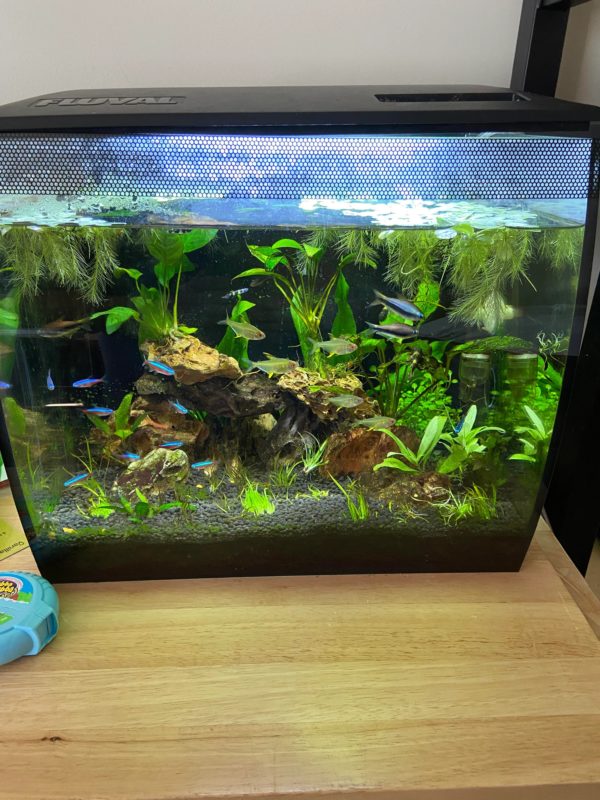
Killifish Tank Size and Specification
This section discusses the optimum tank shape, minimum tank size, filter type, optimum tank size, and how many fish you can keep together.
Optimum Tank Size for Killifish
The recommended tank size is 5 to 10 gallons. In a tank smaller than that, Killifish won’t be able to achieve its full length.
Tank Shape for Killifish
The ideal tank shape is shallow, long, and rectangular.
Filter Type
The recommended filter type for the Killifish tank is a sponge filter. If not, you can install low-powered filtration to maintain the water and airflow, like HOB filters.
Substrate
To mimic a natural environment, you can add floating plants and dark substrates, like sand or gravel.
How Many Killifish in 10 Gallons Tank
In a 10-gallon tank, you can keep around 3-4 Killifish.
Water Parameters for Killifish
This section contains water hardness, pH, and temperature information.
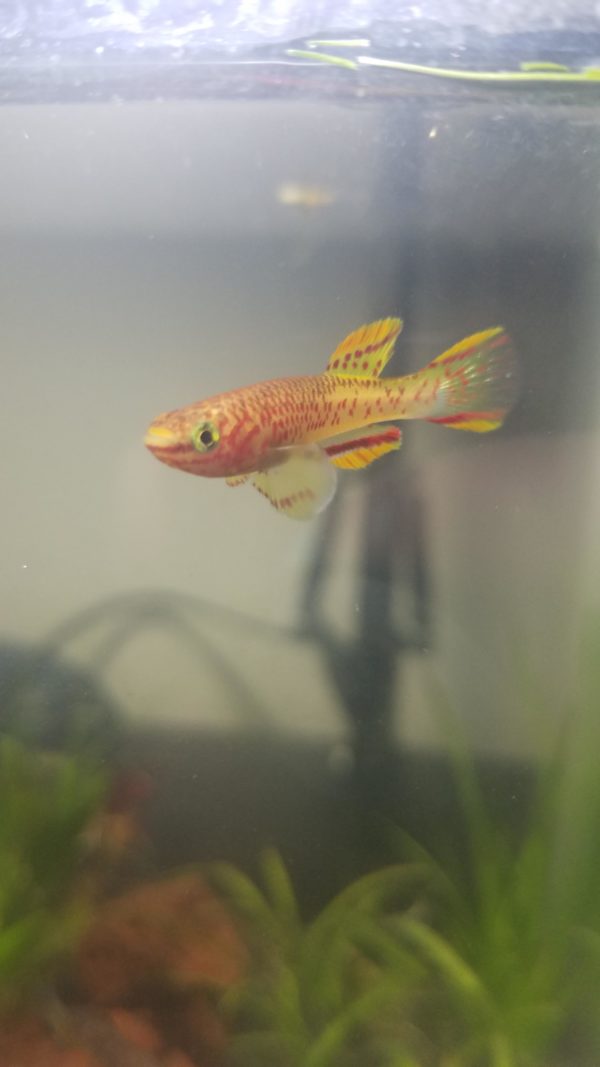
Water Temperature
The ideal water temperature for Killifish is between 72 and 75F. A regular heater can help regulate the desired temperature.
pH Level
The perfect water pH level for Killifish is between 6.6 and 7.2. The pH may vary depending on where you brought the fish. All the same, maintain a pH of 7.
Water Hardness
Water hardness of about 122-162ppm would be ideal. A simple box filter can work in a small tank. A larger tank will require a bigger filter.
Killifish Tank Landscape
Although the Killifish is relatively easy to take care of, it has several tanks and dietary needs that ought to be met. These are
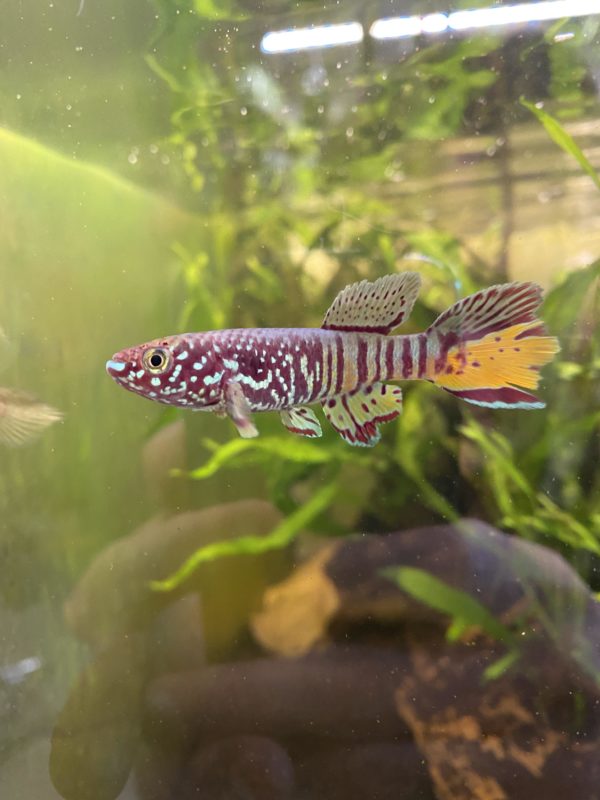
- A 20 gallon tank to house a pair of killifish. If intending to keep a larger species, a larger tank will be necessary.
- A shallow tank as they inhabit shallow water bodies in their natural habitat.
- Keep the water movement to an all time low.
- Lighting should be lowered to a minimum too. With overhanging branches, they hardly receive sunlight in their natural habitat.
- Choose a dark substrate like ADA AquaSoil that mimics that of their original habitat. Dark gravel with fine sand can do well for the fish. One point to keep in mind is to use gravel that cannot harden the water.
- Add rocks to the setting. Make an arrangement that mimics cave-like structures.
- Plants should be added to the tank as well. They should be floating plants as rooted plants may not last.
- Ensure there is a tight lid over the tank as they are swift and may swim out of the tank if it is left open.
Best Plants for Killifish Tank
When you are keeping Killifish, you get a chance to add numerous types of plants to the Killifish tank. These include
- Java fern
- Java moss
- African water fern
- Anubias
- Indian fern
- Hornwort
- Najas
- Marsilea Hirsuta
Worst Plants for Killifish Tank
Speaking of the worst possible ones, avoid any plant that can entirely cover the water surface. That’s because this may cause a disturbance in their growth.
Decorations for Killifish Tank
You should try to add anything that provides “overhand” similar to overhanging branches for the decorations. It can offer a natural and wild feel.
Lighting for Killifish Tank
Killifish prefers living in low lighting conditions.
Feeding Killifish
Killifish are carnivores that eat live foods like crustaceans, worms, insect larvae and crickets. They prefer live foods over frozen or dried feeds. For a hobbyist not prepared to look for live foods, perhaps it is not yet time to keep the killifish.
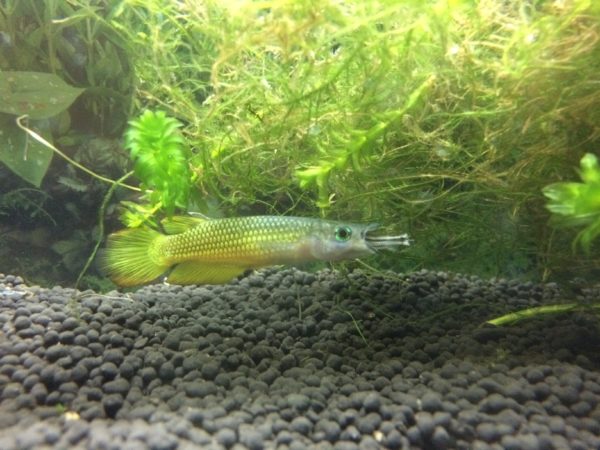
When providing food to the fish, remember to balance its diet. This is especially important during breeding. Fish whose nutritional needs are well met breed successfully.
Best Diet for Killifish
Daphnia
Can be collected from fish ponds. A point of caution though- do not collect other organisms as well. It should also not be fed to fish exclusively as the tank pet may miss out on other dietary requirements.
Brine shrimp
Provides numerous nutritional needs. Can be frozen too and still not have any negative effect on the fish.
Mosquito larvae
It can be cultured in the home by leaving open containers with water where mosquitoes can breed. Proper care should be taken so that the full cycle is not reached.
You can obtain white worms, black worms, and tubifex worms from fish food stores.
How Often Should You Feed Killifish?
You can feed the Killifish twice or thrice a day. Avoid overfeeding them as it can be harmful. If the fish do not consume the food in less than two minutes, you have overfed.
Killifish Behavior and Temperament
Killifish are known to be peaceful with a laid-back temperament. It is what makes them ideal tank mates for a variety of fish.
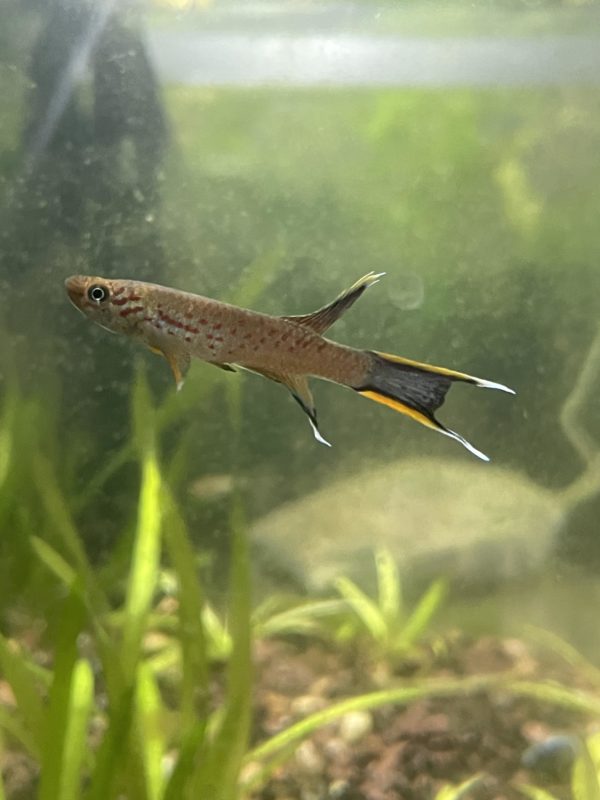
They are relatively agile swimmers that prefer the bottom of the tank. Their body shape helps propel them to the high speed demonstrated in their movement. This trait is mimicked from their natural habitat, where they tend to swim close to the bottom of the lake or sea.
The killifish females are rather docile, and you can keep any number of them together if space is available. The males, however, tend to be aggressive towards each other.
So, if you are a beginner, it is advised to keep only one male Killifish in the tank. You can keep more than one female Killifish as they are not known to be aggressive.
Is Killifish Lone or Societal in Nature
Killifish is a good community fish and can be kept with various small fish, including rummy nose tetras and neon tetras.
Killifish Tank Mates
Ideal Tank Mates for Killifish
Killifish are generally peaceful. Except for the males that fight for superiority, the females can be kept together. Fish species that you can keep together with the Killifish are rummy nose tetra and, neon tetra, Badis Badis.
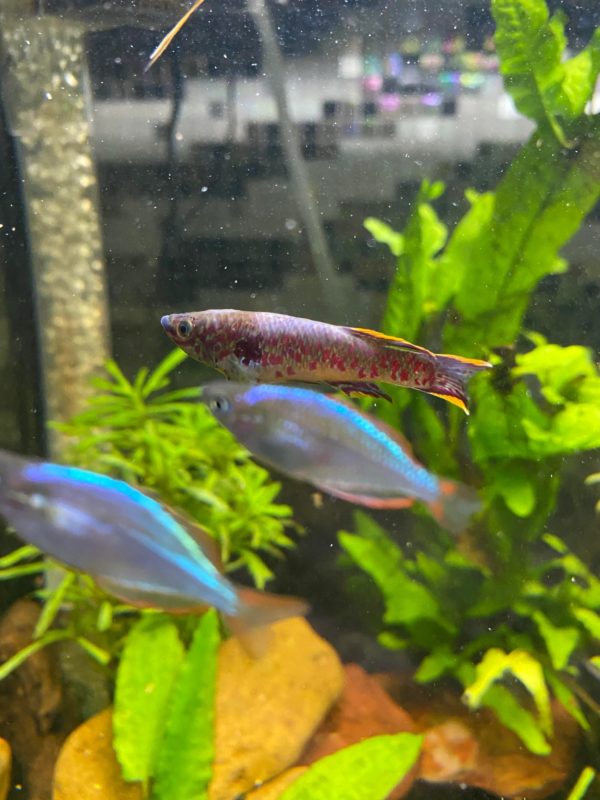
Besides this, Killifish can also live with:
- Celestial pearl danios
- Zebra danios
- Asian stone catfish
- Rosy tetras
- Cardinal tetras
- Yellow dwarf cichlid
- Cockatoo dwarf cichlid
- Agassiz’s dwarf cichlid
- Blackline rasbora
- Harlequin rasbora
- Honey gourami
Bad Tank Mates for Killifish
You should avoid housing Killifish with any fish species that is aggressive. Also, keeping Killifish with larger fish is not a great idea.
Breeding Killifish
They are quite easy to breed, perhaps explaining why they are a favorite pet for most hobbyists. Do the following to breed the fish successfully:
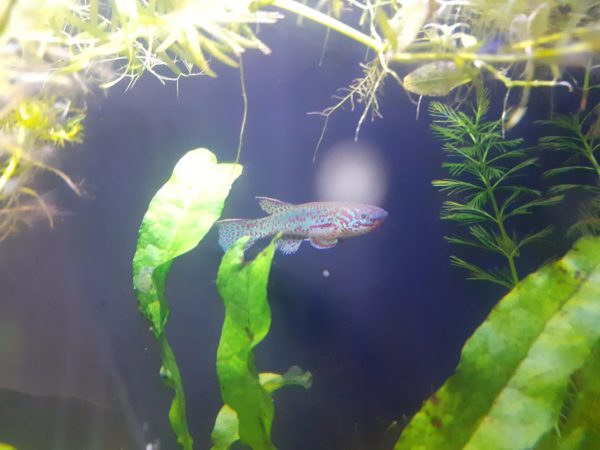
- Provide a small tank for breeding. Provide a substrate of sand and peat moss.
- Place the two Killifish in the tank. The female will lay its eggs under the sand and completely bury them.
- Once the eggs are laid, the two parents should be removed from the aquarium.
- Provide a warm yet moist environment for the next three months.
- Add water to the tank for the eggs to hatch.
- The fry feeds on the egg sac for the first few days before graduating to other feeds like brine shrimp.
Killifish Breeding Level
Killifish are very easy to breed, making them popular with aquarists. This fish species has two reproductive types, i.e., annual Killifish and non-annual Killifish.
Annual Killifish live in water bodies that dry out every year. They reach sexual maturity extremely quickly and lay their eggs in peat moss. Whereas non-annual Killifish lay their eggs in the water.
Killifish Sexual Dimorphism
To distinguish between males and females, you can check the stripes. In males, you will notice vertical black stripes, and in females, there are horizontal black stripes.
Killifish Common Disease and their Treatment
While Killifish is a freshwater species, it can sometimes do well in marine salt to keep them healthy.
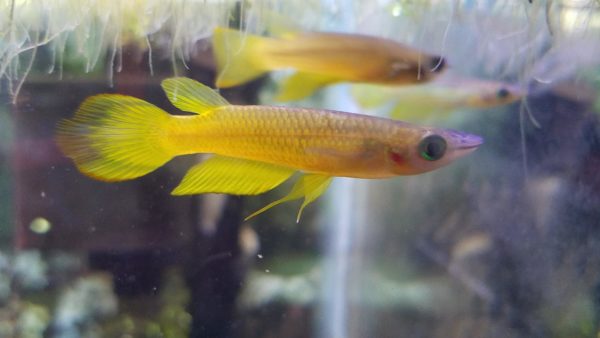
Although Killifish is a fairly hardy fish, it can become ill. Below are some common diseases:
ICH
If your Killifish has developed ICH, you will notice raised white spots pop on their bodies. It makes them rub their bodies against the tank. This disease can be developed when there is a drop in temperature.
ICH is a contagious infection. To treat it, you would require safe ich medication. Then follow the instructions written on the bottle.
Fish Lice
Fish lice is another common Killifish disease that you can spot easily. Fish lice are crustaceans with flat and broad shells. Infected fish will rub themselves against tank walls or decorations.
The lice can be easily removed using tweezers. But after that, you need to treat the whole aquarium to get rid of the lice eggs.
Facts About Killifish
- Keep the tank clean enough to avoid diseases.
- While Killifish have few demands, you must maintain their tank needs to keep them healthy.
- They jump quite high and fall out of the tank if the lid is open.
- They can live for between 3 months and 5 years.
- The Killifish is a lovely and lively tank pet. It can be an interesting addition to the aquarium.
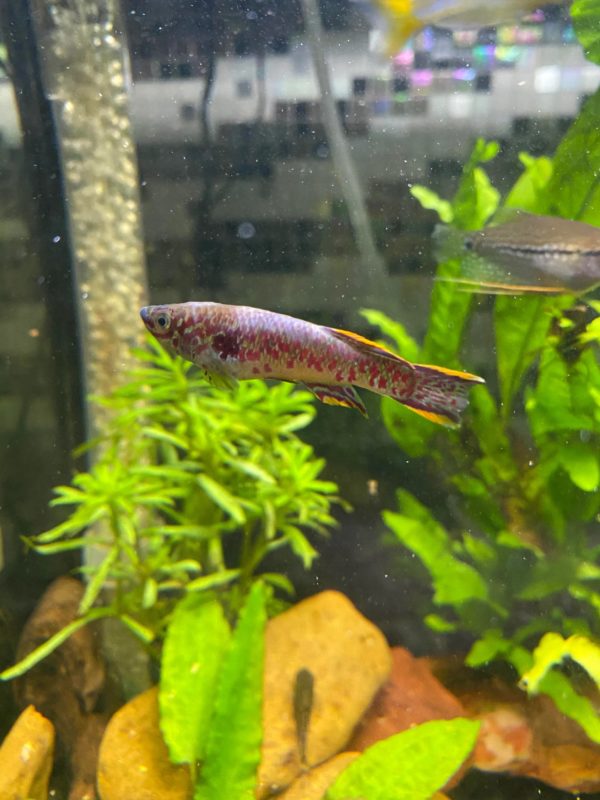
Is Killifish Right For You?
Mostly peaceful, Killifish are quite popular among fish keepers. They are vividly colored, which makes them different. Also, they do not have high maintenance requirements. So, all in all, you can keep Killifish. But you must not try Killifish as your first fish.
Frequently Asked Questions
How long can Killifish live out of water?
Surprisingly, Killifish can live around 66 days out of water. The tendency to live outside the water entirely depends on the species. Killifish can live outside the water because they have adapted to a life out of water due to the drying up of natural habitats in the dry season.
Do Killifish eat algae?
Not all, but certain kinds of Killifish are known to eat algae.
Conclusion
Killifish is one of the most beautiful fishes you can ever keep in your tank. It comes in a variety of colors and has fun mannerisms.
If you are considering getting a Killifish, we highly encourage you. These little fellas don’t get aggressive quickly and can be kept in a community tank.
No related posts.
